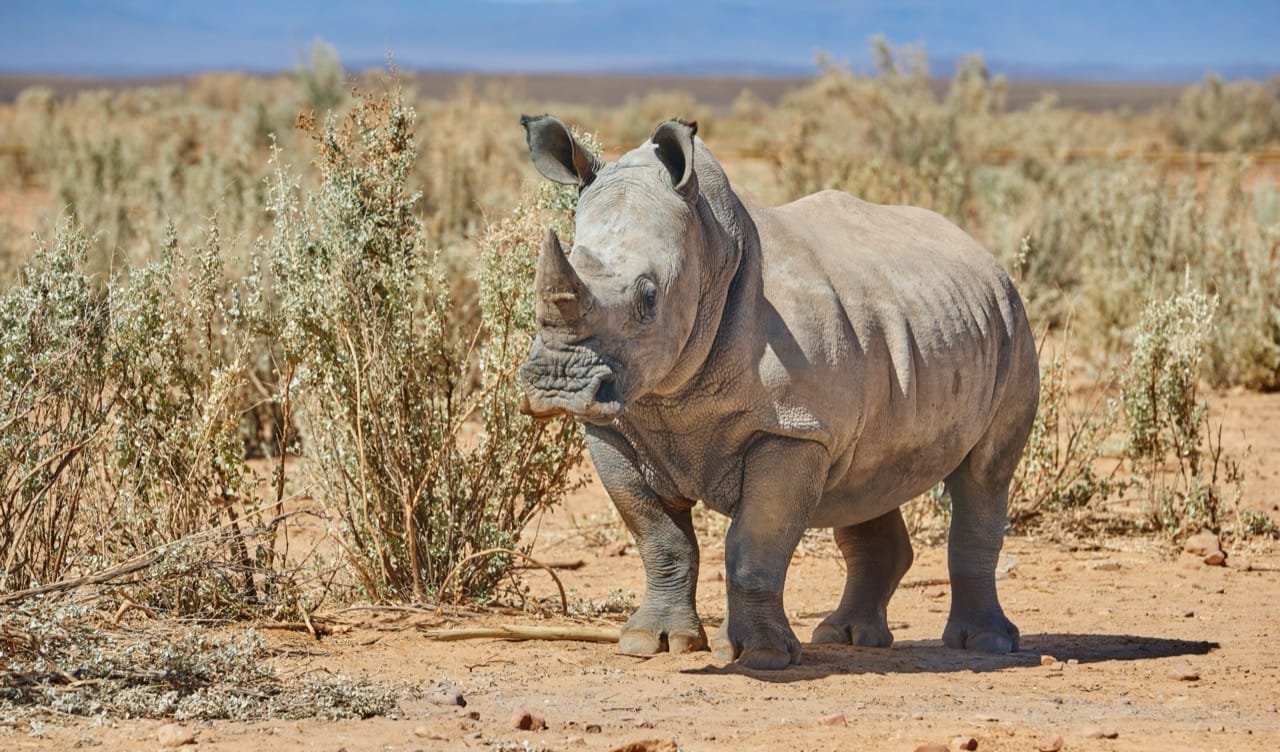Amidst the arid expanses and rugged terrains of Africa, the black rhinoceros (Diceros bicornis) stands as a living testament to the resilience and complexity of savanna ecosystems. This solitary behemoth, often spotted enveloped in dust, is more than just a survivor of the continent’s harsh climates; it is a pivotal player in its ecological narrative. With a history that traces back millions of years, the black rhino has faced near extinction, making its story not only fascinating but also a call to action for conservation efforts worldwide.
Characteristics / Physical Description
The black rhinoceros is an imposing figure, typically weighing between 800 to 1,400 kilograms. It is distinguished by its two horns made of keratin, with the front horn being longer, sometimes reaching up to 1.5 meters in length. Contrary to its name, the black rhino’s skin color varies from brown to grey. This species is characterized by a pointed upper lip, which is highly adapted for grasping leaves and twigs from bushes and trees. Its thick, layered skin acts as a natural armor against the thorny underbrush and predators.
Taxonomy and Classification
Diceros bicornis belongs to the order Perissodactyla and family Rhinocerotidae, which includes other rhinoceros species. The black rhinoceros itself is divided into several subspecies, which vary slightly in size and habitat range. This diversity is a testament to the species’ adaptation to various environments across Africa.
Behavior and Social Structure
Primarily solitary creatures, black rhinos are known for their aggressive behavior and territorial instincts. Adults often have specific home ranges that overlap with others, but they tend to avoid direct contact through unique communication methods such as scent markings and infrasonic sounds. These animals are most active during the evenings and early mornings when they browse for food.
Habitat and Distribution
The black rhinoceros once roamed much of sub-Saharan Africa but now their populations are largely segmented due to significant habitat loss and poaching. They primarily dwell in savannas, grasslands, and tropical bushlands where they find their food sources. Conservation areas and national parks are currently their stronghold, providing a managed environment that helps protect them from human threats.
Diet and Feeding Habits
As browsers, black rhinos feed on a variety of vegetation, including leaves, buds, and branches of bushes and trees. They are particularly fond of acacias, using their prehensile lips to strip leaves and avoid thorns adeptly. Their feeding patterns contribute to the ecological balance, influencing the growth patterns of local vegetation.
Breeding and Reproduction
The reproduction of black rhinos is slow, which contributes to their vulnerability as a species. Females give birth to a single calf every 2.5 to 5 years after a gestation period of approximately 15 to 16 months. Calves remain with their mothers for up to three years, during which they learn essential survival skills. This extended nurturing period is crucial for calf development but makes the reproductive rate of rhinos painfully slow.
Relationship with Humans
Historically, black rhinoceroses have had a tumultuous relationship with humans, primarily due to poaching for their valuable horns. Efforts by conservation organizations have led to better protective measures and a gradual increase in their numbers, though they remain critically endangered. Eco-tourism has also emerged as a pivotal strategy in rhino conservation, providing economic incentives to local communities to protect these majestic animals.
Evolutionary History
The black rhinoceros is part of a lineage that dates back approximately 50 million years. Over time, they have evolved from smaller, less armored predecessors to the large, thick-skinned animals we see today. This evolutionary journey has equipped the black rhino with unique adaptations that allow it to thrive in diverse and often harsh African landscapes.
Use as Research Animals
In scientific contexts, the black rhino has been a valuable subject in studies related to conservation biology, wildlife management, and veterinary medicine. Research on their behavior, genetics, and physiology helps in crafting effective conservation strategies and understanding broader ecological dynamics.

